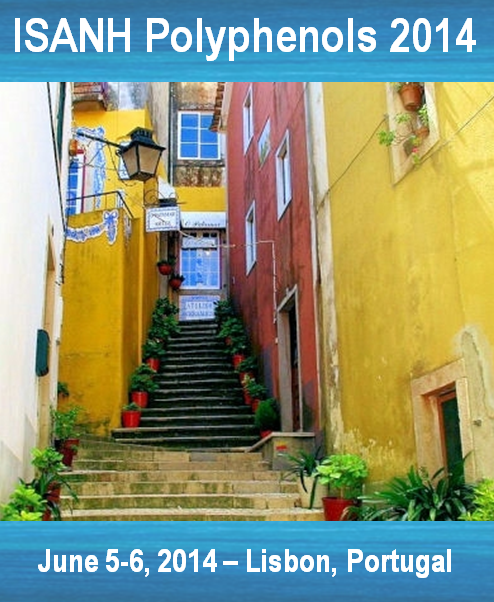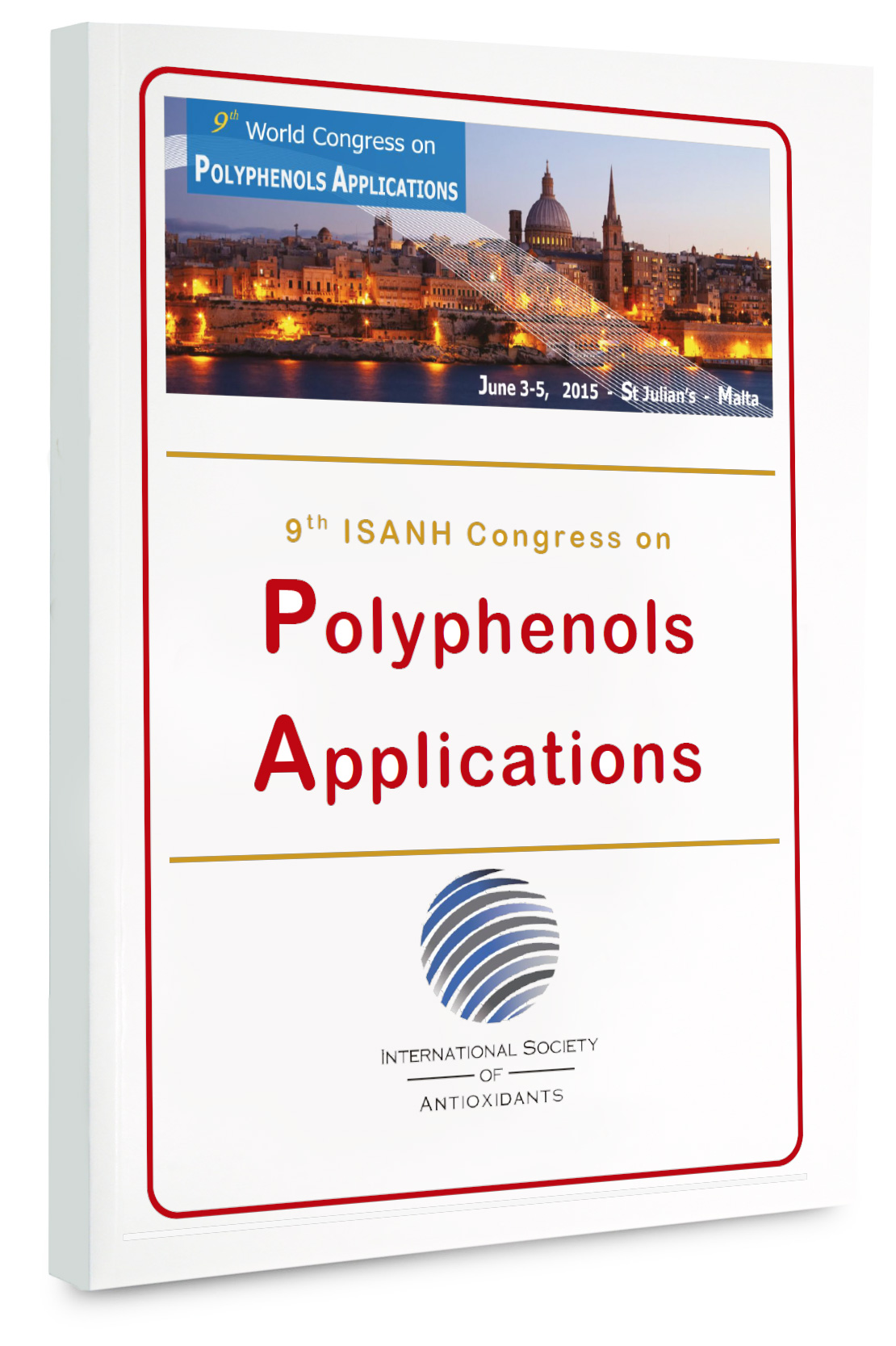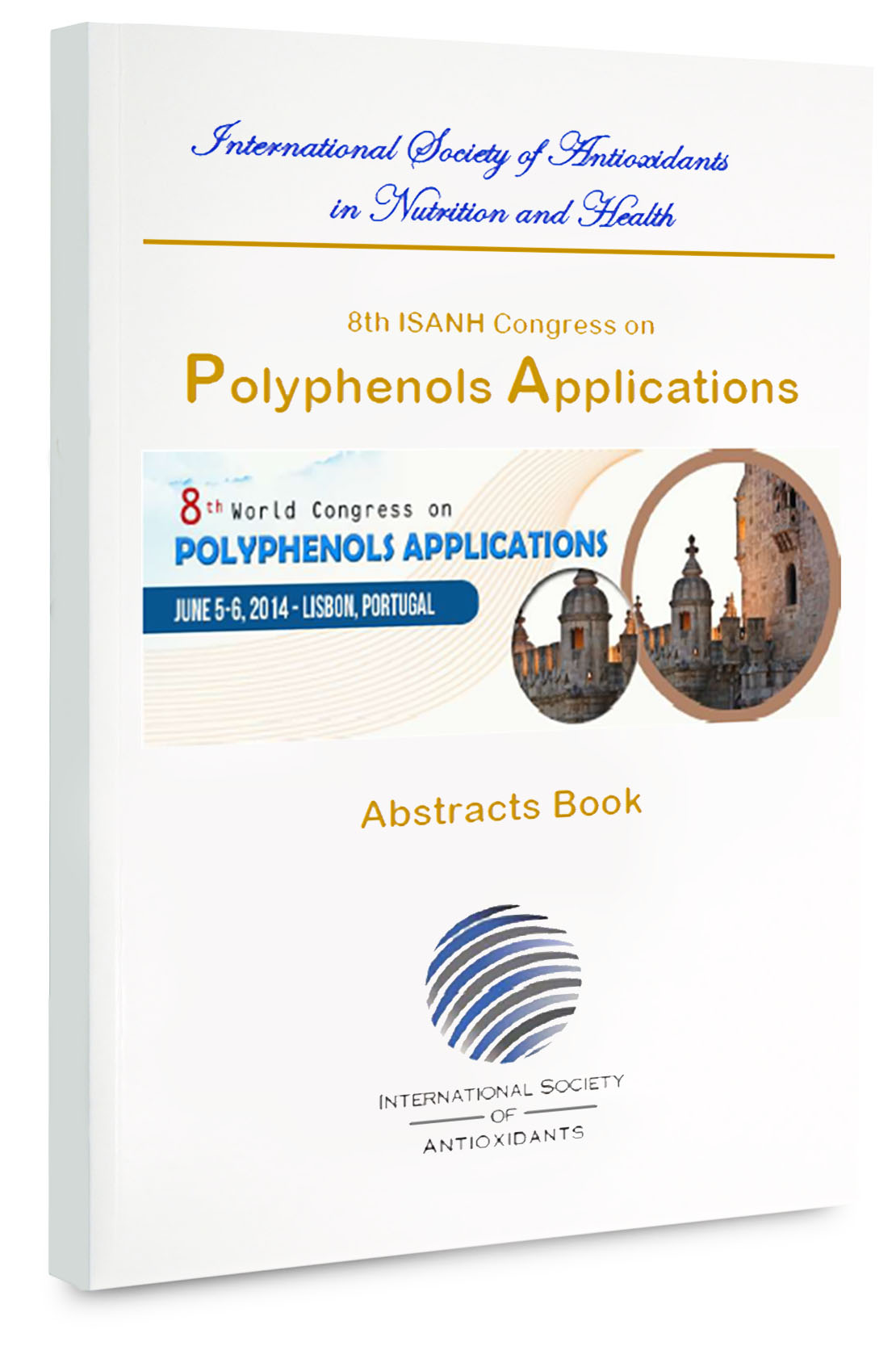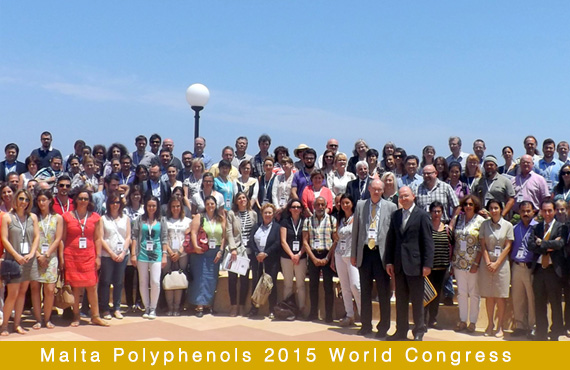News
The list of posters accepted for Polyphenols Conference is online

You can find by clicking here the list of communications accepted for posters presentations.
If your presentation is not on the list, please don't hesitate to contact us.
SANA Malhoa Hotel will host 8th World Congress on Polyphenols Applications

Due to a record of participants, ISANH Polyphenols
remove from SANA Lisboa hotel to SANA Malhoa Hotel
"Pyranoanthocyanins as novel food colorants" during Polyphenols 2014 World Congress in Lisbon next June 2014
 Dr. Fabian Weber from University of Bonn, Germany will present his work. Pyranoanthocyanins are pigments primarily occurring in processed fruit products like juices and wines.
Dr. Fabian Weber from University of Bonn, Germany will present his work. Pyranoanthocyanins are pigments primarily occurring in processed fruit products like juices and wines.
They are formed by the reaction of genuine anthocyanins and several compounds such as pyruvic acid or vinylphenols. The latter are microbial conversion products of hydroxycinnamic acids, e.g., p-coumaric and ferulic acids, formed by decarboxylase-positive Lactobacillus species. Pyranoanthocyanins are of particular interest in food technology because they show increased color stability compared to anthocyanins and exhibit a broad spectrum of color tonalities, rendering them attractive candidates for the application as food colorants.
Global metabolomics for discovery of polyphenol bioactivity: unravelling broad-spectrum effects of xanthohumol in a rodent model of obesity

Dr Fred Stevens, from Linus Pauling Institute and College of Pharmacy, Oregon State University, Corvallis, Oregon, U.S.A will present his recent studies about Global metabolomics for discovery of polyphenol bioactivity: unravelling broad-spectrum effects of xanthohumol in a rodent model of obesity during Lisbon Polyphenols World Congress.
Xanthohumol is a prenylated flavonoid found in hops and beer, and in dietary supplements.
The team treated Zucker fa/fa rats, a model of obesity and metabolic syndrome, for six weeks with xanthohumol at four dose levels and measured metabolome profiles in addition to single endpoints of glucose and lipid homeostasis.
Daily polyphenols intake from fresh fruits in Portugal

During the Polyphenols 2014 World Congress in Lisbon next June 2014, Pr. Claudia Santos from Instituto de Biologia Experimental e Tecnologica, Portugal will propose her work based on "Overview on Daily polyphenols intake from fresh fruits, in particular berries. Effects of berries metabolites on brain."
Despite the well know epidemiological associations between polyphenols and health, the effective polyphenol metabolites and their mechanism of action in human organism is still fairly unknown. Studying the biological mechanisms by which dietary poplyphenols exert an impact in human health requires the knowledge about polyphenols intake, tissue bioavailability, metabolism and bioactivities.
More Articles...
- Polyphenols and Taste: Activation of Distinct Human Bitter Taste Receptors
- A short-cut to comprehensive health benefits of dietary polyphenols: the nitrate-nitrite-nitric oxide pathway
- Encapsulation modulates the bioavailability of anthocyanins and their degradation products
- Regular consumption of a pomegranate and grape juice improves oxidative status and causes metabolome changes in healthy adults





















